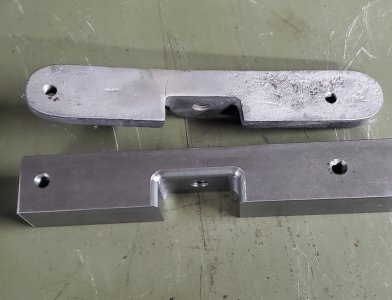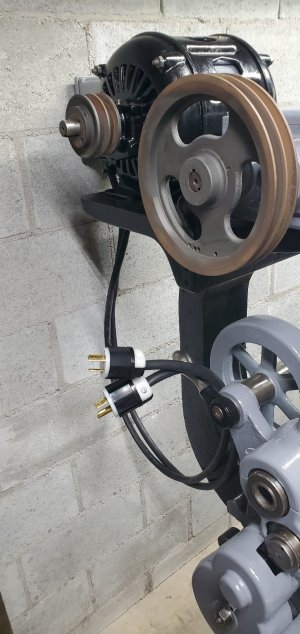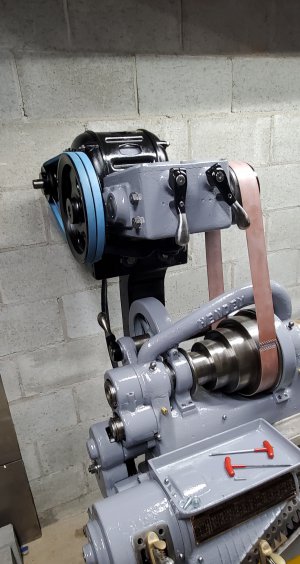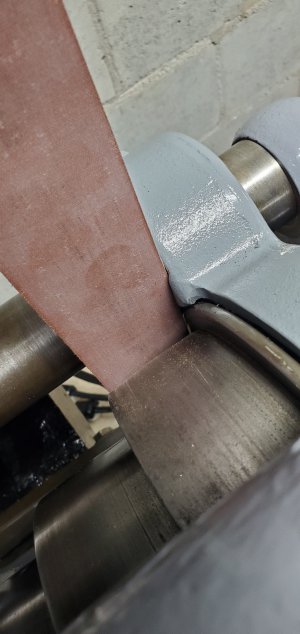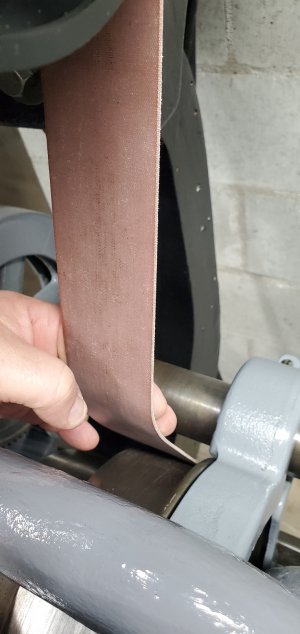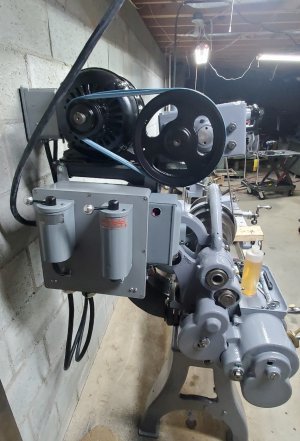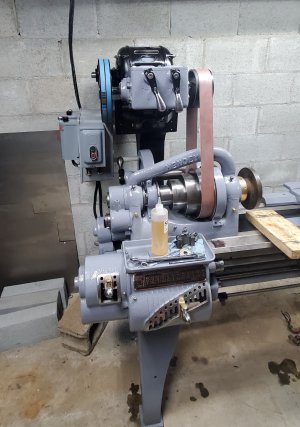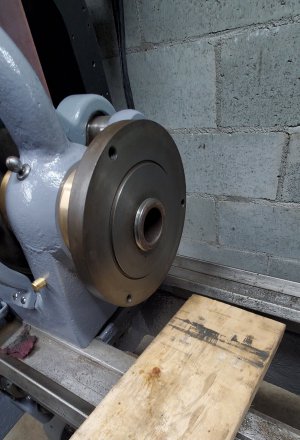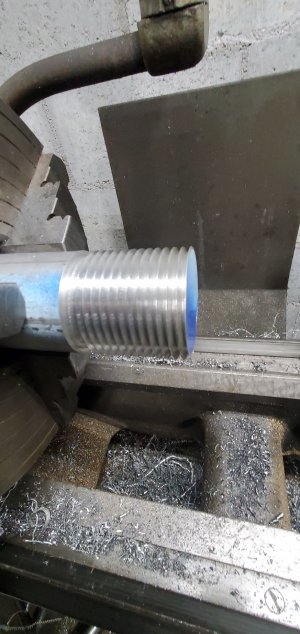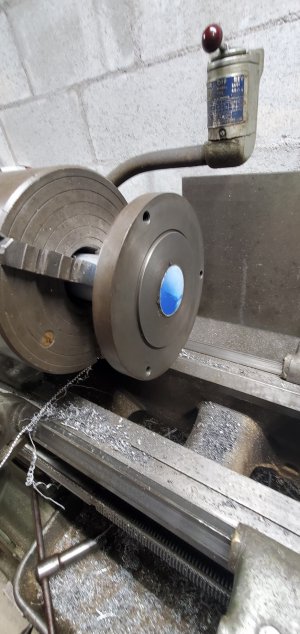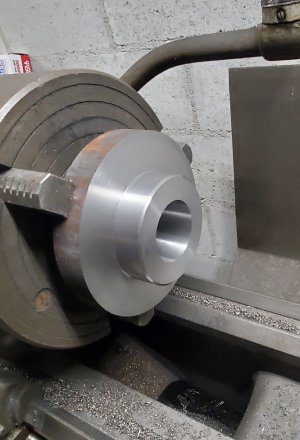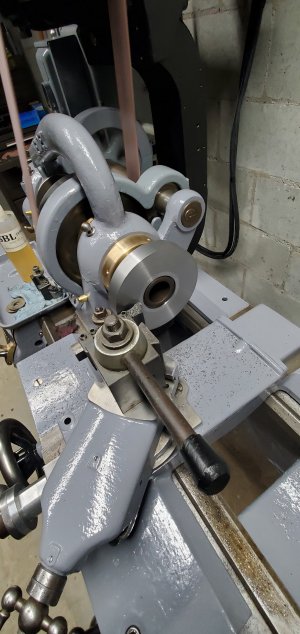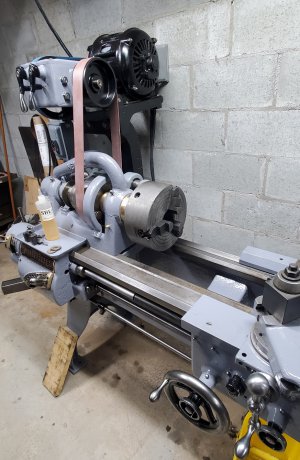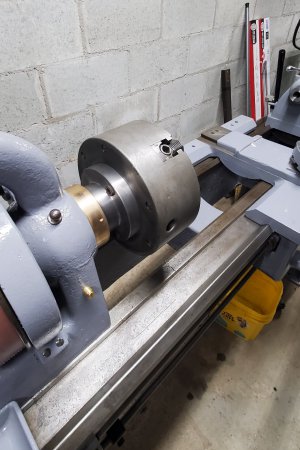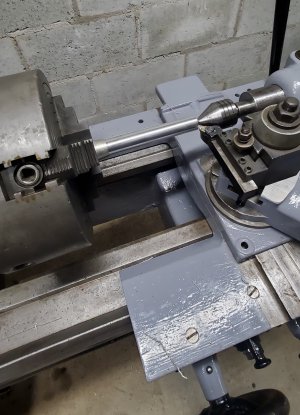- Joined
- Nov 28, 2016
- Messages
- 2,332
I haven't accomplished a lot on the Hendey this week. I've been attempting to formulate a plan on where and how to do the electrical controls and wiring.
I finally realized that I need to finish up with all of the pulleys and install the belts so that I can plan the electrics around the drive system... it wouldn't be a good idea to get a switch too close to a belt or pulley.
I started with the flat belt pulley... I had found and purchased one from ebay. The center bore on the pulley is 1 ⅛"... the output shaft of the transmission is 1", so I machined a sleeve for the pulley, epoxied it in place, then finish bored it and re-established the keyway...
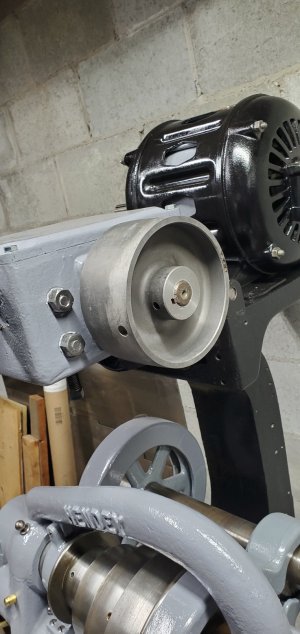
I measured and ordered a 57" belt from a seller on ebay... it should arrive next week.
I've cleaned both flat belt pulleys... I was going to go ahead and install them, then bolt the motor to the belt adjustment slides and measure for the v-belts and go ahead and order them today, but found a problem... one of the adjustment slides is cracked... almost broken...
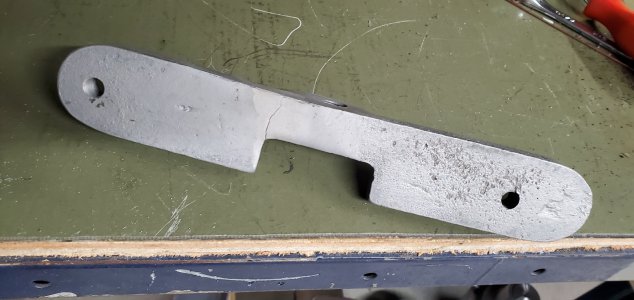
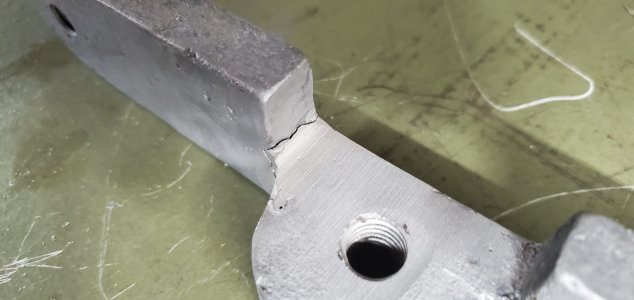
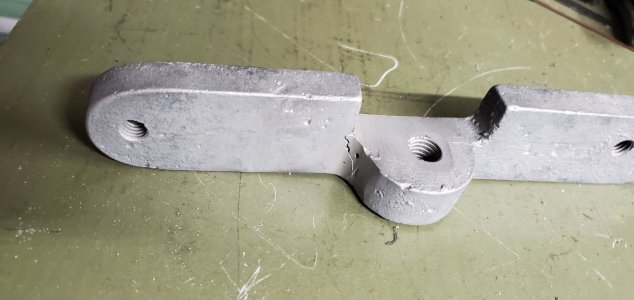
It has already been repaired once and has cracked again in the middle of the repair. I don't know what was used to repair it, it looks like brazing, but it is gray, maybe aluminum bronze? I don't really think repairing it again will be an option, so I'll just make a new one.
-Bear
I finally realized that I need to finish up with all of the pulleys and install the belts so that I can plan the electrics around the drive system... it wouldn't be a good idea to get a switch too close to a belt or pulley.
I started with the flat belt pulley... I had found and purchased one from ebay. The center bore on the pulley is 1 ⅛"... the output shaft of the transmission is 1", so I machined a sleeve for the pulley, epoxied it in place, then finish bored it and re-established the keyway...

I measured and ordered a 57" belt from a seller on ebay... it should arrive next week.
I've cleaned both flat belt pulleys... I was going to go ahead and install them, then bolt the motor to the belt adjustment slides and measure for the v-belts and go ahead and order them today, but found a problem... one of the adjustment slides is cracked... almost broken...



It has already been repaired once and has cracked again in the middle of the repair. I don't know what was used to repair it, it looks like brazing, but it is gray, maybe aluminum bronze? I don't really think repairing it again will be an option, so I'll just make a new one.
-Bear


